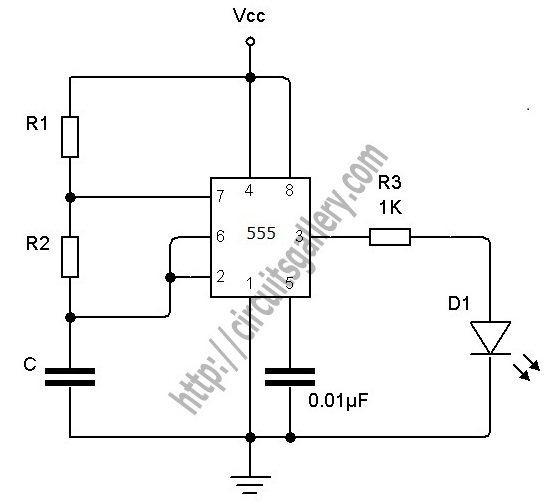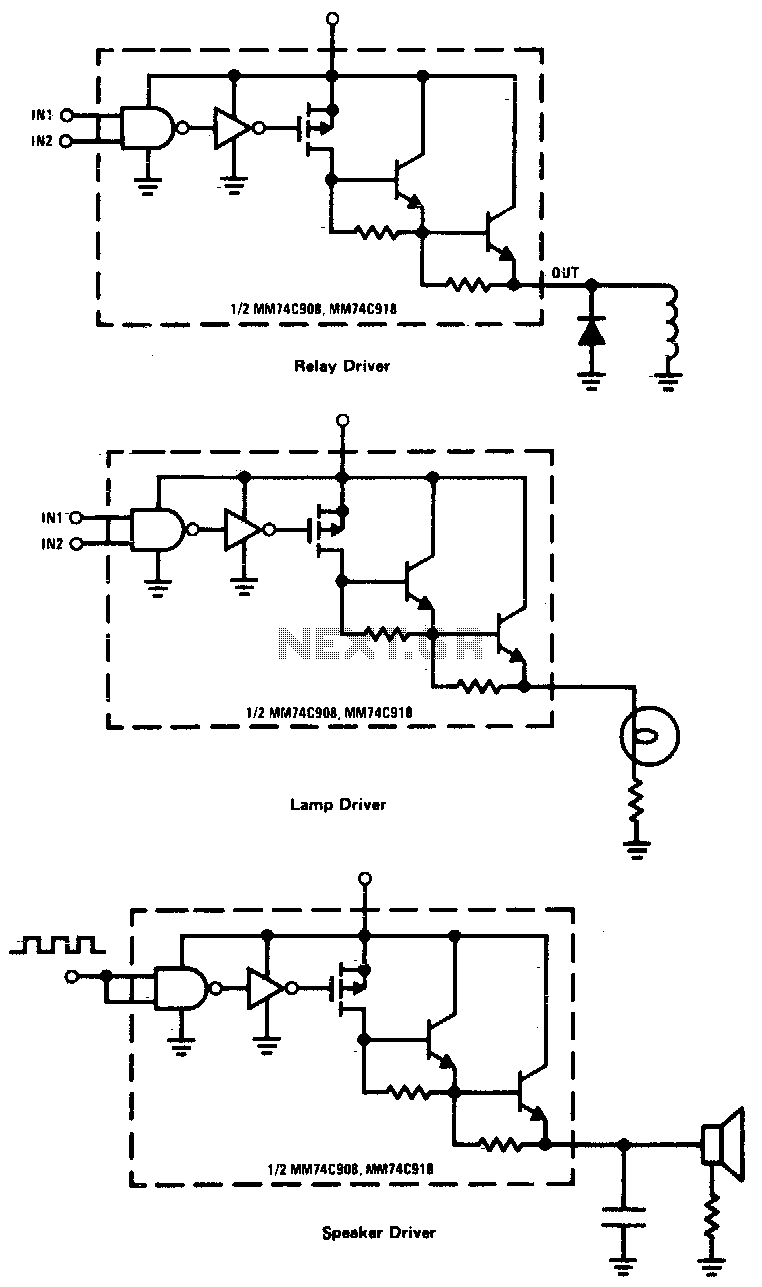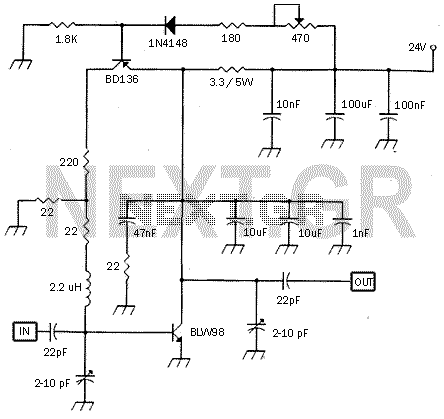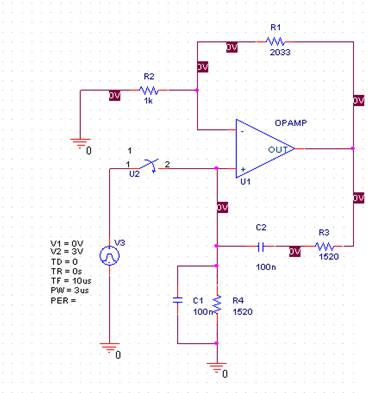
Amplifier Timer Circuit Schematic
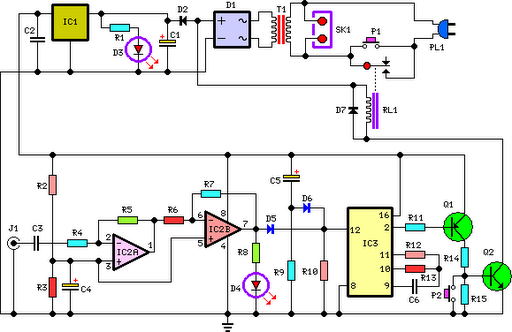
This circuit deactivates an amplifier or any connected device when a low-level audio signal at its input is absent for at least 15 minutes. Pressing P1 turns the device on, supplying power to any appliance connected to SK1. The input audio signal is amplified and squared by IC2A and IC2B, which is monitored by LED D4. When D4 lights up, even briefly, C3 is reset and begins its timing cycle again. Pin 2 of IC3 remains low, keeping two transistors on and allowing the relay to operate. If no signal appears at the input after a 15-minute delay, IC3 completes its timing and pin 2 goes high. This action causes Q1 and Q2 to stop conducting, which turns off the relay. Consequently, the device and any appliances connected to SK1 are fully powered down. Capacitor C5 and resistor R9 reset IC3 when power is applied. Switch P2 allows for immediate shutdown at any time.
The circuit operates on the principle of signal detection and timing, utilizing an audio input to control a relay that manages power to connected devices. The initial stage involves the amplification and squaring of the audio signal through operational amplifiers IC2A and IC2B, which enhances the signal to a level suitable for monitoring. LED D4 serves as a visual indicator of the audio signal's presence, illuminating briefly when the signal is detected.
The timing function is managed by IC3, which is configured to count the absence of the audio signal. Capacitor C3 plays a crucial role in resetting this timing mechanism. When the audio signal is present, C3 is charged, preventing IC3 from reaching its threshold. However, if the audio signal is absent for the specified duration, IC3 triggers a change in its output state at pin 2, transitioning from low to high. This transition turns off the transistors Q1 and Q2, which are responsible for driving the relay. The relay's deactivation results in the disconnection of power to SK1, effectively shutting down the connected devices.
The circuit includes provisions for immediate manual control through switch P2, allowing for the quick deactivation of the system regardless of the audio signal state. Additionally, the reset mechanism provided by C5 and R9 ensures that IC3 is properly initialized upon power-up, establishing a reliable starting condition for the timing operation. This design is particularly useful in applications requiring automatic power management based on audio signal presence, ensuring energy efficiency and equipment protection.This circuit turns-off an amplifier or any other device when a low level audio signal fed to its input is absent for 15 minutes at least. Pushing P1 the device is switched-on feeding any appliance connected to SK1. Input audio signal is boosted and squared by IC2A & IC2B and monitored by LED D4. When D4 illuminates, albeit for a very short peak, I C3 is reset and restarts its counting. Pin 2 of IC3 remains in the low state, the two transistors are on and the relay operates. When, after a 15 minutes delay, no signal appeared at the input, IC3 ends its counting and pin 2 goes high. Q1 & Q2 stop conducting and the relay switches-off. The device is thus completely off as also are the appliances connected to SK1. C5 & R9 reset IC3 at power-on. P2 allows switch-off at any moment. 🔗 External reference
The circuit operates on the principle of signal detection and timing, utilizing an audio input to control a relay that manages power to connected devices. The initial stage involves the amplification and squaring of the audio signal through operational amplifiers IC2A and IC2B, which enhances the signal to a level suitable for monitoring. LED D4 serves as a visual indicator of the audio signal's presence, illuminating briefly when the signal is detected.
The timing function is managed by IC3, which is configured to count the absence of the audio signal. Capacitor C3 plays a crucial role in resetting this timing mechanism. When the audio signal is present, C3 is charged, preventing IC3 from reaching its threshold. However, if the audio signal is absent for the specified duration, IC3 triggers a change in its output state at pin 2, transitioning from low to high. This transition turns off the transistors Q1 and Q2, which are responsible for driving the relay. The relay's deactivation results in the disconnection of power to SK1, effectively shutting down the connected devices.
The circuit includes provisions for immediate manual control through switch P2, allowing for the quick deactivation of the system regardless of the audio signal state. Additionally, the reset mechanism provided by C5 and R9 ensures that IC3 is properly initialized upon power-up, establishing a reliable starting condition for the timing operation. This design is particularly useful in applications requiring automatic power management based on audio signal presence, ensuring energy efficiency and equipment protection.This circuit turns-off an amplifier or any other device when a low level audio signal fed to its input is absent for 15 minutes at least. Pushing P1 the device is switched-on feeding any appliance connected to SK1. Input audio signal is boosted and squared by IC2A & IC2B and monitored by LED D4. When D4 illuminates, albeit for a very short peak, I C3 is reset and restarts its counting. Pin 2 of IC3 remains in the low state, the two transistors are on and the relay operates. When, after a 15 minutes delay, no signal appeared at the input, IC3 ends its counting and pin 2 goes high. Q1 & Q2 stop conducting and the relay switches-off. The device is thus completely off as also are the appliances connected to SK1. C5 & R9 reset IC3 at power-on. P2 allows switch-off at any moment. 🔗 External reference


